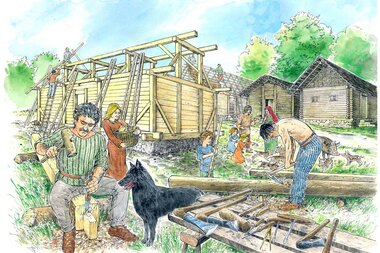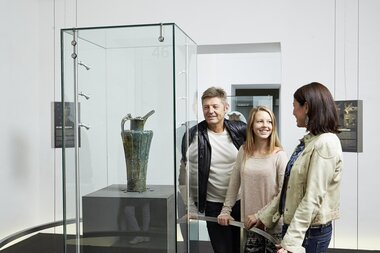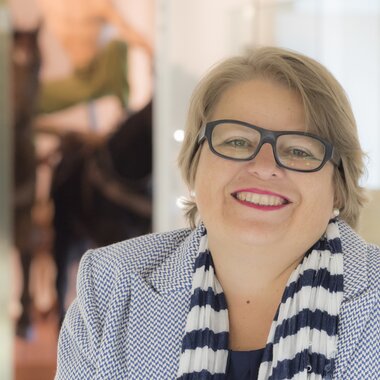Celtic Village – Celtic Museum

Salina Celtic Village on the Dürrnberg was created in close cooperation between the Celtic Museum Hallein and Salzwelten Salzburg.
The first of the three buildings was constructed in 1980 as part of the initial Salzburg Provincial Exhibition “The Celts in Central Europe”. This open-air exhibit was the brainchild of Kurt W. Zeller, the longstanding director of the Celtic Museum Hallein. In 1996, the buildings were relocated using big cargo helicopters to the current location of the Celtic Village, directly across from the entrance of Salzwelten Salzburg, since which time they have also been owned by Salzwelten GmbH. In the following years, more buildings were added to the Celtic Village. Meanwhile, the presentation and the factual content of the exhibition were updated to reflect the latest scientific research as accurately as possible. Numerous excavation and publication projects have given us whole new perspectives into the lives of Iron Age settlers. In the summer of 2012, with the facilities now getting on in years, Salzwelten decided to completely reconceive and revitalize its above-ground attraction in cooperation with the Celtic Museum Hallein. The new “Salina” Celtic Village opened to the public in July 2014. The intention was to communicate knowledge on various levels that would engage visitors with all their senses and envelop them completely in the Iron Age world of 2500 years ago.

The goal of the reconstructed Celtic Village was to make the Iron Age world both colorful and enthralling, featuring many interactive exhibits. At the same time, a conscious decision was made not to show original objects. Instead, life-size replicas are presented of original pieces that are on display in the Celtic Museum Hallein. Needless to say, this involved intensive collaboration between graphic designer Werner Hölzl, the archaeologists and anthropologists of the Celtic Museum Hallein, and Salzwelten Salzburg. The scenes show a very realistic picture of life as it was in the distant past, and certainly not one that is either glorified or idyllic. Physical deficiencies due to malnutrition, the tough working conditions inside the salt mine and injuries are all depicted, as are the living circumstances of simpler and more prosperous Iron Age settlers.

The artistically presented and highly detailed scenes are based on the results of archaeological finds unearthed during digs on the Dürrnberg and at sites of other Iron Age settlements. They invite visitors to immerse themselves completely in the world of 2500 years ago. Simultaneously, a conscious effort has been made to avoid presenting three-dimensional objects for which there is no actual evidence in the archaeological records. The objects which are displayed in the depictions of daily life are intended to spark curiosity and a desire to visit the originals at the Celtic Museum Hallein. Each of the huts also features a corresponding background soundtrack intended to make the impact of the scenes more immediate and profound.

Items to hold in your own hands
Replicas of various objects invite visitors to experiment and discover for themselves. The moment you touch the items in the leather- and woodworking workshops as well as the blacksmith’s, you are transported back to Celtic times. Short explanatory texts in multiple languages enhance the displays in ways that are both intriguing and educational.
Only a short drive or an easy 45-minute hike away, the Celtic Museum Hallein invites you to make even more discoveries thanks to a comprehensive collection documenting Iron Age life. The collection is highlighted by some truly outstanding objects such as the 2500-year-old beaked jug from the Dürrnberg, clothing remnants from the prehistoric mine, and burial objects from a Celtic prince’s grave that had been preserved intact.

For those who are planning to drive there by car, there is plenty of parking available on the Pernerinsel – of extraordinary historical interest in its own right – close to the Celtic Museum Hallein. The hike via the Knappensteig (“Miners’ Path”) leads alongside rock formations and through green forests. In addition to beautiful views of the Salzach River Valley, you will also pass the entrances to four mine tunnels: the Äbtissinnenstollen, the Johann-Jakob-Stollen, the Eggl-Riedl-Stollen and the Wolf-Dietrich-Stollen. In conclusion, you will be able to stroll through the historic section of Hallein with its many colorful building facades and inviting town squares. The Celtic Museum Hallein enjoys an idyllic setting right next to the River Salzach, with a view of the Old Saltworks directly opposite. Just as at Salzwelten Salzburg, the Celtic Museum Hallein traces an historical arc from prehistoric times to the age of salt mining under the prince-archbishops. A cycle of paintings from 1756/57 in the princes’ chambers shows how salt was produced at the time when an independent Salzburg was ruled by princes of the church. That said, an array of colorful experiences both inside and around the mountain allows you to immerse yourself in a cultural legacy that spans the millennia.

The Celtic Museum Hallein
Long after prehistoric mining activities had ceased, so-called “wet mining” techniques were adopted, which involved leaching the salt from the rock inside the mountain to produce a brine solution. That brine was then fed via pipes and channels to big saltworks in Hallein, where it was simmered, leaving a residue of wet salt that was lugged by workers through the streets of the Old City. There were actually many special buildings created specifically for salt production. Finally, flat salt barges would ship the salt to Oberndorf.
As mentioned, salt mining was under the strict governance of the prince-archbishops. And the profits it generated made Salzburg rich.
Prince-Archbishop Sigismund von Schrattenbach commissioned large-scale oil paintings for three rooms of the salt-administration building which now houses the Celtic Museum Hallein. These paintings are the best-preserved extant historical depictions of mining, timber production, salt evaporation and salt transportation.

